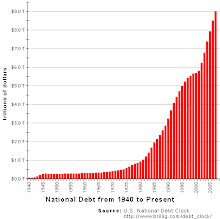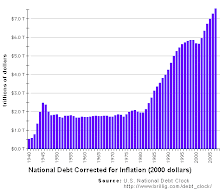Tuesday, May 13, 2008
Prices Above Equilibrium
Prices Above Equilibrium
INSERT DIAGRAM HERE.
At any market price above the equilibrium price, the quantity supplied by producers (represented by the horizontal distance between the vertical axis and the supply curve at that price) is larger than the quantity demanded by consumers (represented by the horizontal distance between the vertical axis and the demand curve).
When the market price is above the equilibrium price, there is a surplus of the product. The quantity supplied exceeds the quantity demanded. This situation will not be maintained very long. Since some sellers are unable to find buyers for all of their products at the current market price, the price of the product will tend to fall and a smaller quantity of the product will be produced. (This represents a move down the supply curve toward the origin.)
When stores at the mall have things that do not sell as quickly as expected, they put them on sale, don't they?
As the price falls in this market, there is an increase in the quantity of this product that is demanded. (This represents a movement down the demand curve.)
At any price above equilibrium, there is pressure for the market price to fall (because the quantity supplied exceeds the quantity demanded). This pressure continues until the market price reaches equilibrium.
Figure 10. An illustration of how prices above equilibrium create a surplus.
INSERT DIAGRAM HERE.
At any market price above the equilibrium price, the quantity supplied by producers (represented by the horizontal distance between the vertical axis and the supply curve at that price) is larger than the quantity demanded by consumers (represented by the horizontal distance between the vertical axis and the demand curve).
When the market price is above the equilibrium price, there is a surplus of the product. The quantity supplied exceeds the quantity demanded. This situation will not be maintained very long. Since some sellers are unable to find buyers for all of their products at the current market price, the price of the product will tend to fall and a smaller quantity of the product will be produced. (This represents a move down the supply curve toward the origin.)
When stores at the mall have things that do not sell as quickly as expected, they put them on sale, don't they?
As the price falls in this market, there is an increase in the quantity of this product that is demanded. (This represents a movement down the demand curve.)
At any price above equilibrium, there is pressure for the market price to fall (because the quantity supplied exceeds the quantity demanded). This pressure continues until the market price reaches equilibrium.
Figure 10. An illustration of how prices above equilibrium create a surplus.
Subscribe to:
Post Comments (Atom)






No comments:
Post a Comment